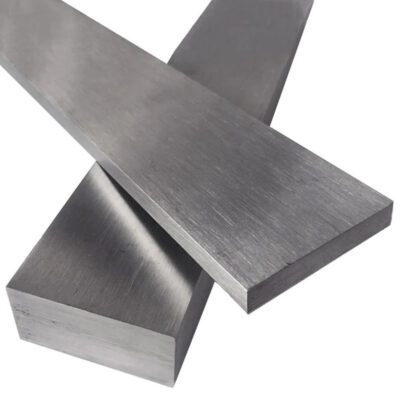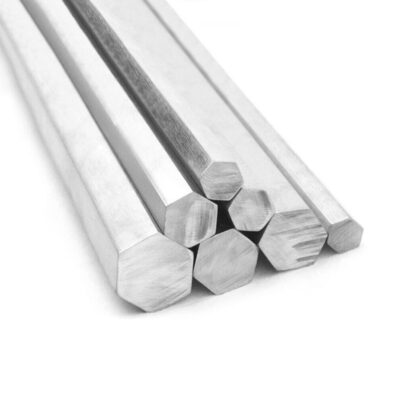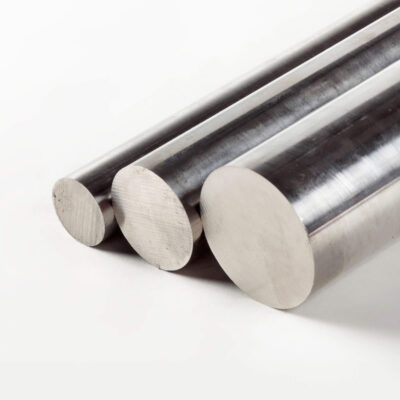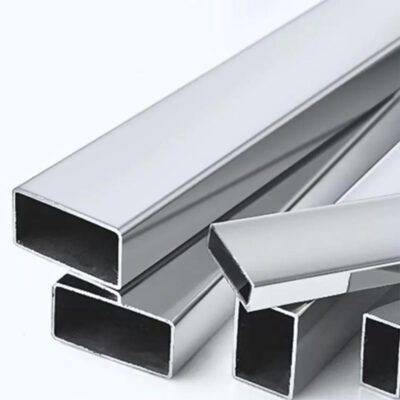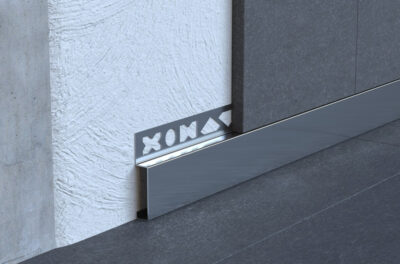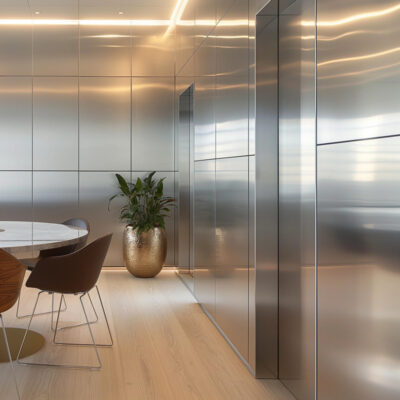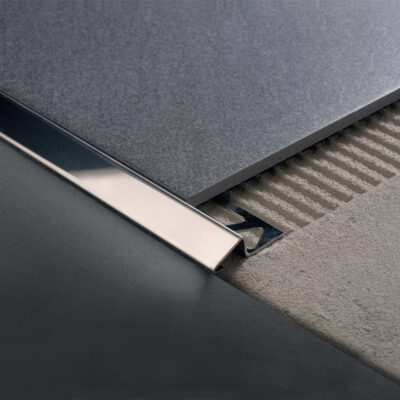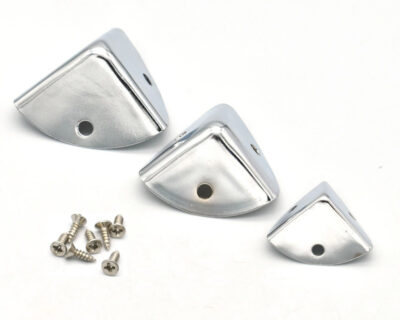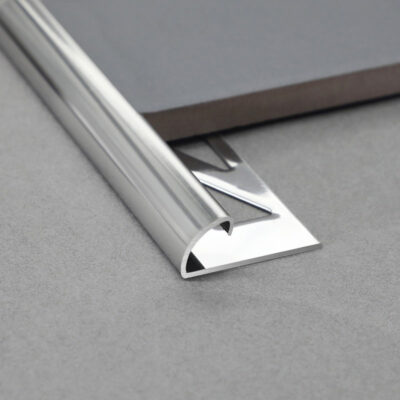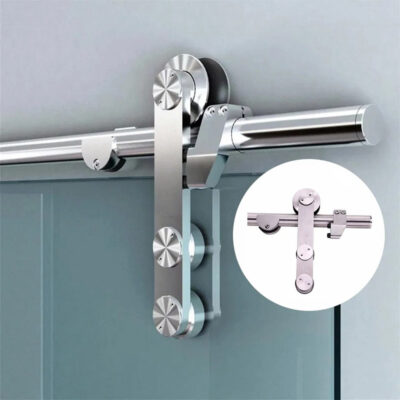Introduction to Stainless Steel Square Bars
The first time I walked through a major steel fabrication facility, I was struck by the meticulous organization of their material yard. Among the various profiles and shapes, stainless steel square bars stood out—not just for their geometric precision, but for the way they reflected light differently than their carbon steel counterparts. That visual distinction hints at the fundamental differences that make these materials so valuable across countless applications.
Stainless steel square bars represent a perfect marriage of form and function—combining the corrosion resistance inherent to stainless steel with the versatile geometric profile of a square cross-section. These bars typically contain at least 10.5% chromium, which forms a passive chromium oxide layer when exposed to oxygen, providing exceptional resistance to corrosion and staining. Unlike round bars, the square profile offers distinct advantages in certain applications, particularly where flat mating surfaces, precise corners, or specific aesthetic requirements come into play.
What separates these components from ordinary steel isn’t just their composition, but their remarkable versatility. From the framework of modern architectural marvels to critical components in food processing equipment, stainless steel square bars provide structural integrity while maintaining cleanliness and resistance to environmental factors. This combination of properties has made them indispensable in industries where reliability cannot be compromised.
The market for these specialized metal products continues to expand alongside innovations in manufacturing processes and alloy development. E-Sang and other industry leaders have contributed significantly to advancing both the quality and availability of these materials, making them more accessible for applications ranging from small-scale boutique projects to massive industrial undertakings.
While their appearance might seem straightforward, stainless steel square bars embody decades of metallurgical advancement and precision manufacturing. Their seemingly simple geometry belies complex production processes that ensure dimensional accuracy, surface quality, and consistent mechanical properties. These factors combine to create components that engineers and designers can rely on for critical applications where failure is not an option.
Types and Grades of Stainless Steel Square Bars
Ask any metallurgist about stainless steel grades, and you’ll likely receive a passionate explanation of the nuanced differences between various alloy compositions. This diversity isn’t merely academic—each grade offers specific performance characteristics that make it suitable for particular environments and applications.
The 300 series, particularly grades 304 and 316, dominates the market for stainless steel square bars. Grade 304, often referred to as “18/8” due to its composition of 18% chromium and 8% nickel, serves as the workhorse of the industry. Its excellent formability, weldability, and corrosion resistance make it suitable for everything from kitchen equipment to architectural applications. During a recent project consulting for a food processing facility, I specified 304 square bars for equipment framework precisely because they could withstand frequent cleaning with caustic solutions without degradation.
Grade 316 takes corrosion resistance further by adding molybdenum to the mix. This addition proves crucial in maritime environments where chlorides present a constant threat. A marine engineer once described 316 stainless as “the difference between annual replacement and decades of service” when discussing offshore platform components.
The 400 series offers different benefits altogether. Grade 430, with higher chromium but lower nickel content, provides good corrosion resistance at a lower cost point. Meanwhile, grade 416 offers enhanced machinability—a critical factor when extensive fabrication is required. I’ve seen machine shops specifically request 416 square bars when tight tolerances and complex machining operations were specified.
Beyond these common grades, specialty alloys address extremely challenging environments. Duplex stainless steels like 2205 combine aspects of both austenitic and ferritic microstructures, delivering exceptional strength alongside corrosion resistance. These properties make duplex grades increasingly popular for structural components where load-bearing capacity cannot be compromised.
The selection of appropriate grade depends on several interconnected factors:
| Grade | Corrosion Resistance | Relative Cost | Typical Applications | Key Characteristics |
|---|---|---|---|---|
| 304 | Excellent for general environments | Moderate | Food equipment, architectural features, general fabrication | Good weldability, non-magnetic when annealed |
| 316 | Superior in chloride environments | High | Marine equipment, chemical processing, pharmaceutical equipment | Contains molybdenum, excellent chemical resistance |
| 430 | Good in mild environments | Lower | Decorative applications, indoor equipment | Magnetic, more limited formability |
| 416 | Moderate | Moderate | Precision machined components | Free-machining, contains sulfur |
| 2205 | Excellent, particularly against stress corrosion cracking | Very high | Structural components in harsh environments | Approximately twice the yield strength of 304/316 |
The microstructure of these different grades significantly impacts their performance characteristics. Austenitic grades like 304 and 316 exhibit excellent ductility and toughness even at cryogenic temperatures but cannot be hardened through heat treatment. Martensitic grades can be hardened but generally offer reduced corrosion performance. These metallurgical distinctions create important trade-offs that engineers must carefully consider.
Dr. Elaine Chen, a materials scientist I interviewed for this article, emphasized that “grade selection represents the most critical decision when specifying stainless steel square bars. Even perfect dimensional accuracy becomes irrelevant if the material fails prematurely in its service environment.”
Manufacturing Processes and Quality Control
The journey from raw materials to precisely dimensioned stainless steel square bars involves sophisticated processes that have evolved significantly over decades. Having toured several production facilities across North America and Asia, I’ve observed firsthand how different manufacturers approach these processes—sometimes with subtle variations that can impact the final product quality.
The primary manufacturing methods for stainless steel square bars fall into two categories: hot working and cold finishing. Hot rolling begins with heating stainless steel billets to temperatures typically between 2100-2300°F (1150-1260°C), well above their recrystallization temperature. At these temperatures, the metal becomes plastic and can be formed through a series of rolling stands that gradually reduce dimensions and establish the square profile.
During a recent visit to a specialized mill in Sheffield, I watched as glowing orange billets transformed through progressive rolling operations. The process requires precise control of temperature, reduction per pass, and cooling rates to maintain desired metallurgical properties. As the production engineer explained, “Every parameter affects grain structure and ultimately determines mechanical properties.”
Cold drawing follows different principles altogether. This process begins with hot-rolled material that undergoes annealing before being drawn through progressively smaller dies at room temperature. The result is a product with:
- Tighter dimensional tolerances (typically ±0.002″ or better)
- Improved surface finish
- Enhanced mechanical properties through work hardening
- More precise corner geometry
Both processes can produce high-quality stainless steel square bars, but each offers distinct advantages. Hot-rolled products typically provide more competitive pricing and availability in larger dimensions, while cold-finished bars deliver superior surface quality and dimensional precision critical for certain applications.
Quality control measures remain integral throughout production. Manufacturers employ various testing methods to ensure compliance with industry standards:
Applications Across Industries
The versatility of stainless steel square bars becomes evident when examining their widespread use across diverse industries. Their unique combination of mechanical properties, corrosion resistance, and aesthetic appeal makes them suitable for applications ranging from purely functional to highly decorative.
In architectural applications, these components often serve both structural and aesthetic purposes simultaneously. The clean lines of square profiles create distinctive visual elements in modern buildings. During a renovation project for a corporate headquarters in Chicago, I witnessed how 316 stainless square bars transformed an ordinary staircase into an architectural focal point. The material’s ability to maintain its appearance with minimal maintenance made it particularly valuable for high-traffic areas where regular cleaning would prove impractical.
The food processing industry presents entirely different demands. Here, sanitation drives material selection more than aesthetics. The non-porous surface of stainless steel square bars prevents bacterial accumulation, while their resistance to cleaning chemicals ensures longevity. A production manager at a dairy processing facility explained their preference: “We exclusively use 316 stainless for all framework components because they withstand both product acids and sanitizing chemicals without deterioration.”
The transportation sector leverages different properties altogether. In automotive applications, the weight-to-strength ratio becomes critical. While stainless steel square bars weigh more than aluminum alternatives, their superior strength often allows for smaller cross-sections, partially offsetting the weight difference. A vehicle engineer at a major manufacturer shared how they use precision-ground stainless square bars for certain critical jig components where dimensional stability cannot be compromised despite repeated thermal cycling.
Marine environments present perhaps the most demanding conditions. The combination of salt spray, humidity, and mechanical stress creates conditions that rapidly destroy lesser materials. Marine engineer Sarah Foster explains: “On offshore platforms, we specify duplex stainless steel square bars for critical structural components despite their higher initial cost. When you factor in the cost of helicopter maintenance trips and production downtime, the economics clearly favor materials that won’t require replacement.”
Pharmaceutical manufacturing presents yet another specialized application. In these facilities, even microscopic material degradation can contaminate products worth thousands of dollars per pound. The investment in high-grade stainless steel square bars for equipment frames and supports pays dividends through reduced risk of product contamination.
The following table illustrates common applications across industries:
| Industry | Primary Applications | Preferred Grades | Key Requirements |
|---|---|---|---|
| Architecture | Railings, structural supports, decorative elements | 304, 316 | Aesthetic appearance, weather resistance, structural integrity |
| Food Processing | Equipment frames, conveyor supports, tank supports | 316, 304 | Sanitation, chemical resistance, ease of cleaning |
| Pharmaceutical | Clean room equipment, process system supports | 316L, 304L | Ultra-clean surfaces, resistance to sanitizing agents |
| Marine | Structural supports, railings, equipment mounts | 316, 2205 | Extreme corrosion resistance, structural strength |
| Heavy Equipment | Wear components, guide rails, structural elements | 17-4PH, 304 | Wear resistance, dimensional stability, strength |
| Automotive | Jig components, specialized tooling | 416, 303 | Machinability, dimensional stability |
Each industry continues to discover new applications for these versatile components as design engineers become increasingly familiar with their unique properties and manufacturing techniques improve to meet ever more demanding specifications.
Technical Specifications and Standards
When specifying stainless steel square bars, precision matters. The difference between success and failure often lies in understanding the technical details and ensuring compliance with relevant industry standards. Throughout my years consulting on material selection, I’ve found that engineers who grasp these specifications can avoid costly mistakes and optimize performance.
Dimensional tolerances represent one of the most fundamental specifications. Standard hot-rolled stainless steel square bars typically conform to tolerances of ±0.023″ for bars up to 1″ and gradually increasing for larger sizes. Cold-finished bars offer significantly tighter tolerances, often ±0.002″ for sizes up to 1″. These seemingly small differences become critical in applications requiring precise fits or when multiple components must align perfectly.
During a recent troubleshooting assignment, I encountered a case where an equipment manufacturer experienced persistent assembly problems. The issue traced back to inconsistent square bar dimensions that barely exceeded specified tolerances but accumulated across multiple components. Switching to cold-finished bars with tighter tolerances immediately resolved the issue.
Surface finish specifications vary widely depending on the manufacturing process and subsequent treatments. The industry typically expresses these as roughness average (Ra) values measured in microinches:
| Process | Typical Ra Value (μin) | Visual Appearance | Applications |
|---|---|---|---|
| Hot Rolled | 100-250 | Matte, may show scale marks | Structural components where appearance is secondary |
| Cold Drawn | 20-50 | Smoother, consistent appearance | Components with moderate aesthetic requirements |
| Polished | 8-32 | Bright, reflective surface | Visible components, food processing equipment |
| Ground | 4-16 | Very smooth, precise dimensions | High-precision components, bearing surfaces |
| Mirror Polished | <4 | Highly reflective | Architectural features, decorative elements |
National and international standards govern the production and testing of stainless steel square bars. In North America, ASTM specifications predominate, with ASTM A276/A276M covering standard stainless steel bars and shapes. This specification addresses chemical composition, mechanical properties, and permissible variations in dimensions.
European standards include EN 10088-3, which provides detailed specifications for semi-finished products, bars, rods, and sections of corrosion-resistant steels for general purposes. When working on international projects, understanding these different standards becomes essential for ensuring material compatibility.
Testing methodologies for verifying material properties include:
- Tensile testing to determine yield strength, tensile strength, and elongation
- Hardness testing (typically Rockwell or Brinell)
- Chemical analysis through spectrographic methods
- Corrosion resistance testing for specific environments
- Non-destructive testing for detecting internal defects
Materials engineer Dr. James Wong points out a common misunderstanding: “Many designers specify a grade without considering that the same grade can exhibit significant property variations depending on processing history and form. The relevant ASTM or EN standard provides crucial context beyond simply naming a grade.”
Beyond standard specifications, custom requirements frequently arise for specialized applications. For nuclear applications, additional testing for ferrite content may be required. Medical implementations might necessitate enhanced cleanliness specifications or traceability requirements. Understanding when and how to specify these requirements separates experienced engineers from novices.
Advantages and Limitations of Stainless Steel Square Bars
The choice to use stainless steel square bars comes with significant advantages, but also with certain limitations that must be understood to make informed decisions. Having specified these materials for hundreds of projects, I’ve developed a nuanced appreciation for their capabilities and constraints.
Corrosion resistance remains the defining advantage of stainless steel square bars. This property stems from the chromium content forming a self-healing passive oxide layer on the surface. When I started my career, I underestimated the long-term value of this property until witnessing a 15-year-old installation where stainless components remained virtually unchanged while carbon steel elements had been replaced multiple times.
The mechanical properties offer another significant advantage. Austenitic stainless steels like 304 and 316 maintain their toughness even at extreme temperatures—from cryogenic applications to high-temperature environments exceeding 800°F (427°C). This temperature stability proves invaluable in applications experiencing thermal cycling.
The aesthetic qualities shouldn’t be overlooked. The clean, defined edges of square bars combined with the lustrous surface of stainless steel create components that often require no additional finishing or coating. This characteristic reduces lifetime maintenance costs while providing a contemporary appearance that architects and designers appreciate.
However, these advantages come with tradeoffs that must be considered during material selection:
Cost represents the most obvious limitation. Stainless steel square bars typically cost 3-5 times more than their carbon steel equivalents. This price differential can be difficult to justify in applications where corrosion resistance provides limited benefit or where alternative materials might suffice. A building contractor I collaborated with once commented, “We’d love to use stainless everywhere, but the budget simply won’t allow it.”
Weight presents another consideration. With a density approximately 7.9 g/cm³, stainless steel weighs significantly more than aluminum alternatives (around 2.7 g/cm³). This weight difference impacts transportation costs, ease of installation, and may require additional structural support in certain applications.
Magnetic properties create limitations in specific applications. Standard austenitic grades like 304 and 316 are generally non-magnetic in the annealed condition, but can become somewhat magnetic when cold worked. Applications involving magnetic fields or where magnetic properties must be strictly controlled require careful grade selection and processing specifications.
Machinability varies significantly between grades. While free-machining grades like 303 and 416 offer excellent machinability, they sacrifice some corrosion resistance. Standard austenitic grades like 304 and 316 present greater machining challenges, requiring different cutting parameters, more rigid setups, and often specialized tooling. A machine shop owner described working with 316 stainless as “like cutting taffy compared to carbon steel.”
Welding stainless steel square bars demands specific techniques and filler materials to maintain corrosion resistance at welded joints. Improper welding procedures can lead to sensitization, where chromium carbides form at grain boundaries, depleting the surrounding material of chromium and creating vulnerability to intergranular corrosion.
This comparative analysis highlights the complex tradeoffs involved:
| Property | Stainless Steel Square Bars | Carbon Steel Square Bars | Aluminum Square Bars |
|---|---|---|---|
| Corrosion Resistance | Excellent without coatings | Poor without protective coatings | Good in many environments |
| Initial Cost | High | Low | Moderate to high |
| Weight | Heavy (7.9 g/cm³) | Heavy (7.8 g/cm³) | Light (2.7 g/cm³) |
| Strength (typical yield) | 30-200 ksi depending on grade | 36-100 ksi depending on grade | 10-90 ksi depending on alloy |
| Maximum Service Temp | 800-2000°F depending on grade | 750-1000°F depending on grade | 200-400°F depending on alloy |
| Machinability | Fair to good, varies by grade | Good to excellent | Excellent |
| Magnetic Properties | Varies by grade | Magnetic | Non-magnetic |
| Lifecycle Cost | Often lower due to longevity | Higher due to maintenance/replacement | Moderate |
The balance between these factors ultimately determines the appropriateness of stainless steel square bars for specific applications. As materials scientist Dr. Elena Rodriguez told me, “We need to consider the entire life cycle of the component, not just initial material cost. A slightly more expensive material that lasts three times longer often represents the most economical choice.”
Selection Guide and Best Practices
Selecting the appropriate stainless steel square bar involves navigating numerous variables and potential pitfalls. Through years of specifying these materials for diverse applications, I’ve developed a systematic approach that ensures optimal performance while avoiding common mistakes.
The selection process should begin with a thorough analysis of the operating environment. Consider not just normal conditions but potential extremes and upset scenarios. During a coastal infrastructure project, we initially specified grade 304 stainless steel square bars based on typical exposure conditions. Fortunately, a veteran engineer questioned this choice, pointing out occasional salt spray exposure during storms. This insight led us to upgrade to grade 316, likely preventing premature failure.
Mechanical requirements form the next critical consideration. Beyond basic strength calculations, consider:
- Cyclic loading and fatigue resistance
- Impact requirements, especially at temperature extremes
- Deflection limitations for long spans
- Vibration characteristics
- Connection methods and their effect on overall integrity
The manufacturing and fabrication plan significantly impacts material selection. If extensive welding is required, grades with better weldability like 304L or 316L (the “L” indicating low carbon content) often prove advantageous despite their slightly lower strength. Similarly, applications requiring extensive machining might benefit from free-machining grades despite some compromise in corrosion performance.
Dimensional considerations extend beyond the basic cross-sectional measurements. Available length becomes particularly important for continuous runs, as joining methods introduce potential weak points or corrosion sites. Standard length availability typically ranges from 10 to 20 feet (3 to 6 meters), with custom lengths available at premium prices.
Common selection mistakes I’ve encountered include:
- Over-specifying grade when a less expensive option would suffice
- Under-specifying grade and facing premature failure
- Ignoring processing history when specifying properties
- Failing to consider fabrication requirements
- Overlooking available sizes and resulting material waste
Proper storage and handling practices significantly impact the performance of stainless steel square bars. Despite their corrosion resistance, these materials require protection during storage and transportation. Best practices include:
- Store in clean, dry conditions away from carbon steel items
- Use non-metallic or stainless steel slings for lifting
- Maintain protective coverings until installation
- Clean surfaces after fabrication to remove iron contamination
- Avoid marking with carbon steel tools
A quality control engineer at a manufacturing facility shared a valuable observation: “We’ve traced numerous corrosion issues to tiny iron particles embedded during handling rather than any inherent material deficiency. Proper handling protocols eliminated these problems entirely.”
When working with suppliers, clear communication of requirements proves essential. Specifying simply “304 stainless steel square bar” leaves considerable room for interpretation. A more complete specification might read:
“ASTM A276 Type 304 stainless steel square bar, cold finished, 1.000″ ±0.002″, 120″ long, surface finish 32 μin Ra max, certified material test report required.”
This level of detail eliminates ambiguity and ensures the supplied material will meet application requirements. During a critical aerospace project, this precise specification language prevented potential issues when a supplier attempted to substitute material that wouldn’t have met the necessary requirements.
Future Trends and Innovations
The landscape for stainless steel square bars continues to evolve through technological advancement, changing market demands, and shifting regulatory requirements. Following these developments closely has allowed me to anticipate future needs and specify materials with greater confidence.
Alloy development represents one of the most exciting areas of innovation. Traditional stainless steel compositions are being refined and enhanced to address specific performance challenges. During a recent metallurgy conference, I learned about new lean duplex grades that maintain most performance characteristics of standard duplex stainless steels while reducing costly nickel content. These developments show particular promise for structural applications where both strength and corrosion resistance are essential.
Advanced manufacturing technologies are transforming production capabilities. Precision rolling equipment with enhanced computer control now delivers tighter tolerances and more consistent properties than previously possible. A production engineer at a specialty metals facility demonstrated how their new equipment could maintain dimensional tolerances of ±0.001″ on square bars—a level of precision previously achievable only through grinding operations.
Market trends point toward increasing demand for stainless steel square bars in emerging applications:
- Sustainable architecture embracing exposed structural elements
- Renewable energy infrastructure requiring corrosion-resistant components
- Advanced medical equipment with stringent cleanliness requirements
- Hydrogen infrastructure development requiring materials compatible with hydrogen embrittlement concerns
Environmental considerations increasingly influence material selection. Life cycle assessment (LCA) methodologies now frequently factor into specifications, often favoring stainless steel despite higher initial costs due to its longevity and recyclability. In a recent infrastructure project, the client initially balked at the cost premium for stainless components until presented with LCA data demonstrating overall cost advantages over the 50-year design life.
The global supply chain for these materials continues to evolve. Traditional production centers in Europe and North America now face significant competition from manufacturers in Asia. This competition drives both innovation and cost efficiency but requires careful supplier qualification to ensure consistent quality. During factory audits in emerging manufacturing regions, I’ve observed substantial variations in quality control practices that directly impact final product performance.
Additive manufacturing technologies present intriguing possibilities for creating customized stainless steel components that would be difficult or impossible to produce through traditional methods. While still evolving, these technologies may eventually enable the production of complex assemblies that eliminate the need for certain square bar applications while creating entirely new opportunities in other areas.
Dr. Michael Wei, director of metallurgical research at a leading materials laboratory, offers this perspective: “The future of stainless steel components lies not just in developing new alloys, but in tailoring processing methods to optimize microstructure for specific applications. The same chemical composition can yield dramatically different properties through controlled processing.”
Regulatory changes also drive innovation, particularly regarding environmental impact. New regulations concerning hexavalent chromium and other potential environmental concerns push manufacturers to develop processes with reduced environmental footprints. These changes indirectly influence material availability and processing methods.
For engineers and designers working with these materials, staying informed about these evolving trends provides a competitive advantage. The ability to specify emerging materials or processes often translates to performance improvements, cost reductions, or both. As one experienced project manager told me, “Yesterday’s over-specification is today’s standard practice and tomorrow’s minimum requirement. We must continuously learn to remain effective.”
Conclusion: Making Informed Decisions
Throughout this exploration of stainless steel square bars, we’ve examined the multifaceted considerations that influence their selection and application. The journey from understanding basic properties to making sophisticated material decisions involves balancing numerous factors—technical requirements, economic constraints, fabrication considerations, and long-term performance expectations.
The value proposition of stainless steel square bars extends far beyond their immediate appearance. Their combination of mechanical properties, corrosion resistance, and aesthetic qualities creates opportunities across diverse industries. Yet these advantages must be weighed against higher initial costs, weight considerations, and fabrication challenges to determine true applicability for specific projects.
My experience across hundreds of applications has reinforced that successful implementation depends on asking the right questions early in the design process. Rather than defaulting to familiar specifications, take time to evaluate the specific operating environment, required service life, fabrication methods, and economic constraints. This thoughtful approach often reveals that the seemingly expensive solution proves most economical over the complete lifecycle.
The knowledge shared by industry experts throughout this article highlights the importance of collaboration between designers, fabricators, suppliers, and end users. Each perspective contributes valuable insights that shape optimal material decisions. By fostering these collaborative relationships and maintaining open communication, organizations can leverage collective expertise to maximize performance while controlling costs.
As you approach your next project involving stainless steel square bars, consider developing a systematic evaluation process that incorporates the technical, economic, and practical factors we’ve discussed. Document your decision criteria to create institutional knowledge that benefits future projects and helps less experienced team members understand the rationale behind material selections.
The field continues to evolve through material innovations, production advancements, and application developments. Staying informed about these changes through industry publications, supplier relationships, and professional networks ensures your specifications reflect current best practices rather than outdated assumptions.
Ultimately, the most successful applications of stainless steel square bars result from thoughtful analysis, appropriate grade selection, and careful implementation—balancing immediate costs against long-term performance to deliver sustainable value.
Frequently Asked Questions about Stainless Steel Square Bars
Q: What are Stainless Steel Square Bars, and what makes them unique?
A: Stainless Steel Square Bars are metallic bars with a square cross-section, made from stainless steel. They are unique due to their excellent corrosion resistance, high tensile strength, and durability. These properties make them ideal for a variety of industrial applications, including construction, manufacturing, and engineering.
Q: What are the common applications of Stainless Steel Square Bars?
A: Stainless Steel Square Bars are used in various industries such as:
- Construction: For building frameworks and support beams.
- Manufacturing: In producing machine parts and tools.
- Marine and Chemical Environments: Thanks to their superior corrosion resistance.
- Food Industry: For equipment and appliances in commercial kitchens.
- Automotive and Aerospace: For engine parts and aircraft components.
Q: What grades of Stainless Steel Square Bars are commonly used, and how do they differ?
A: Commonly used grades include 304, 316, and 416. Each grade has unique properties:
- 304: Offers excellent corrosion resistance and good strength, often used in hygienic environments.
- 316: Features superior corrosion resistance, especially in marine and chemical environments.
- 416: Known for excellent machinability, used in applications requiring precision.
Q: How are Stainless Steel Square Bars produced, and what finishes are available?
A: Stainless Steel Square Bars are produced through processes like hot rolling, cold drawing, or machining. They come in various finishes, such as polished, brushed, or mill finishes, which provide flexibility in design options.
Q: What benefits do Stainless Steel Square Bars offer compared to other materials?
A: Stainless Steel Square Bars offer several benefits:
- Corrosion and stain resistance
- High strength-to-weight ratio
- Ease of fabrication and cleaning
- Aesthetic appeal
- Environmental friendliness due to recyclability
Q: How do I choose the right Stainless Steel Square Bar for my project?
A: To choose the right Stainless Steel Square Bar, consider factors such as the application’s environmental conditions, required strength and corrosion resistance, and the desired finish. Also, ensure the bar meets relevant industry standards for your specific use case.


